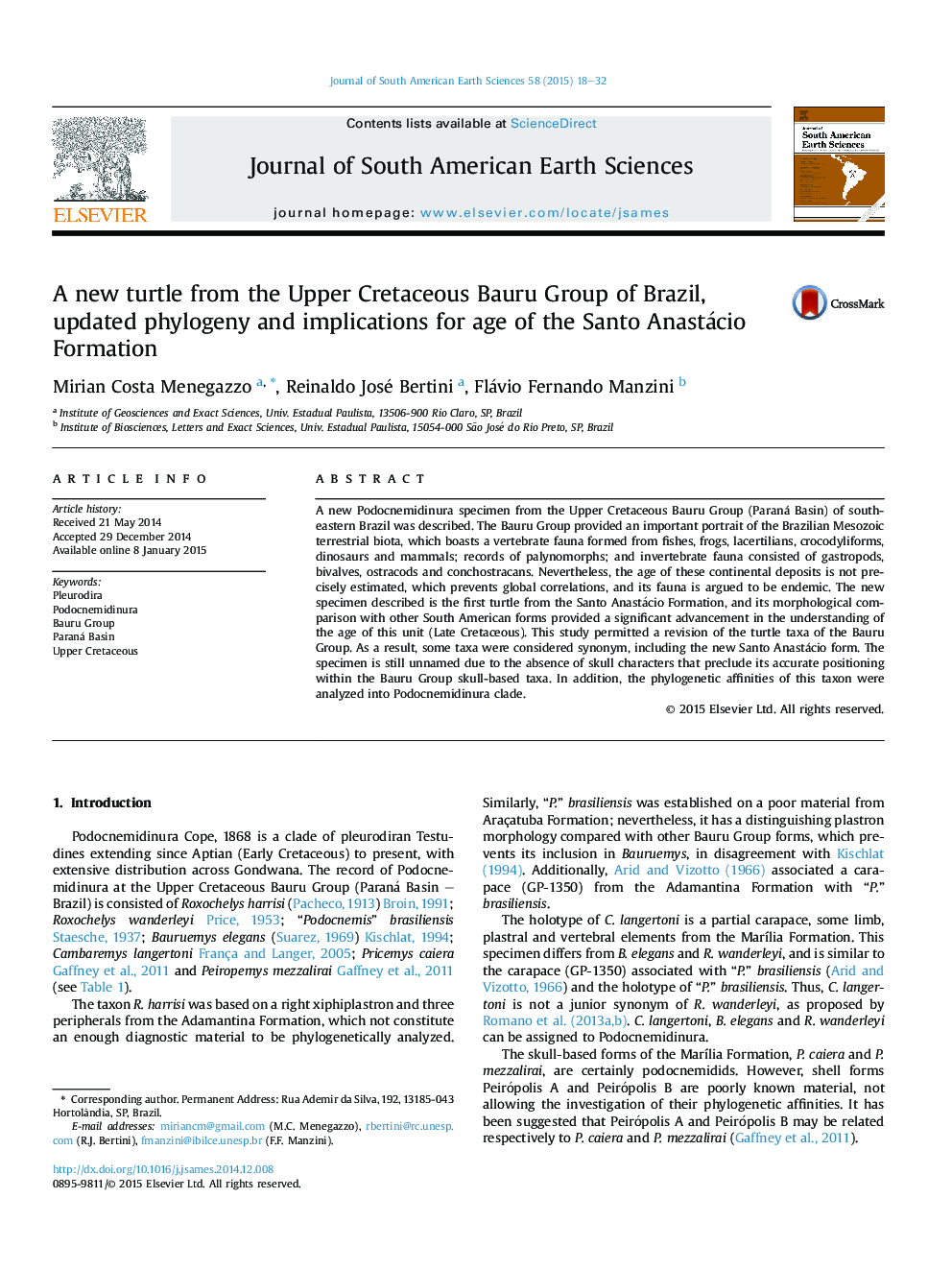| Article ID | Journal | Published Year | Pages | File Type |
|---|---|---|---|---|
| 4682257 | Journal of South American Earth Sciences | 2015 | 15 Pages |
•Phylogenetic analysis and morphological comparisons allow revision of the Bauru Group turtle taxa.•First turtle fossil described from the Santo Anastácio Formation (Paraná Basin).•Late Cretaceous age estimated to new specimen.
A new Podocnemidinura specimen from the Upper Cretaceous Bauru Group (Paraná Basin) of southeastern Brazil was described. The Bauru Group provided an important portrait of the Brazilian Mesozoic terrestrial biota, which boasts a vertebrate fauna formed from fishes, frogs, lacertilians, crocodyliforms, dinosaurs and mammals; records of palynomorphs; and invertebrate fauna consisted of gastropods, bivalves, ostracods and conchostracans. Nevertheless, the age of these continental deposits is not precisely estimated, which prevents global correlations, and its fauna is argued to be endemic. The new specimen described is the first turtle from the Santo Anastácio Formation, and its morphological comparison with other South American forms provided a significant advancement in the understanding of the age of this unit (Late Cretaceous). This study permitted a revision of the turtle taxa of the Bauru Group. As a result, some taxa were considered synonym, including the new Santo Anastácio form. The specimen is still unnamed due to the absence of skull characters that preclude its accurate positioning within the Bauru Group skull-based taxa. In addition, the phylogenetic affinities of this taxon were analyzed into Podocnemidinura clade.
Graphical abstractFigure optionsDownload full-size imageDownload as PowerPoint slide
